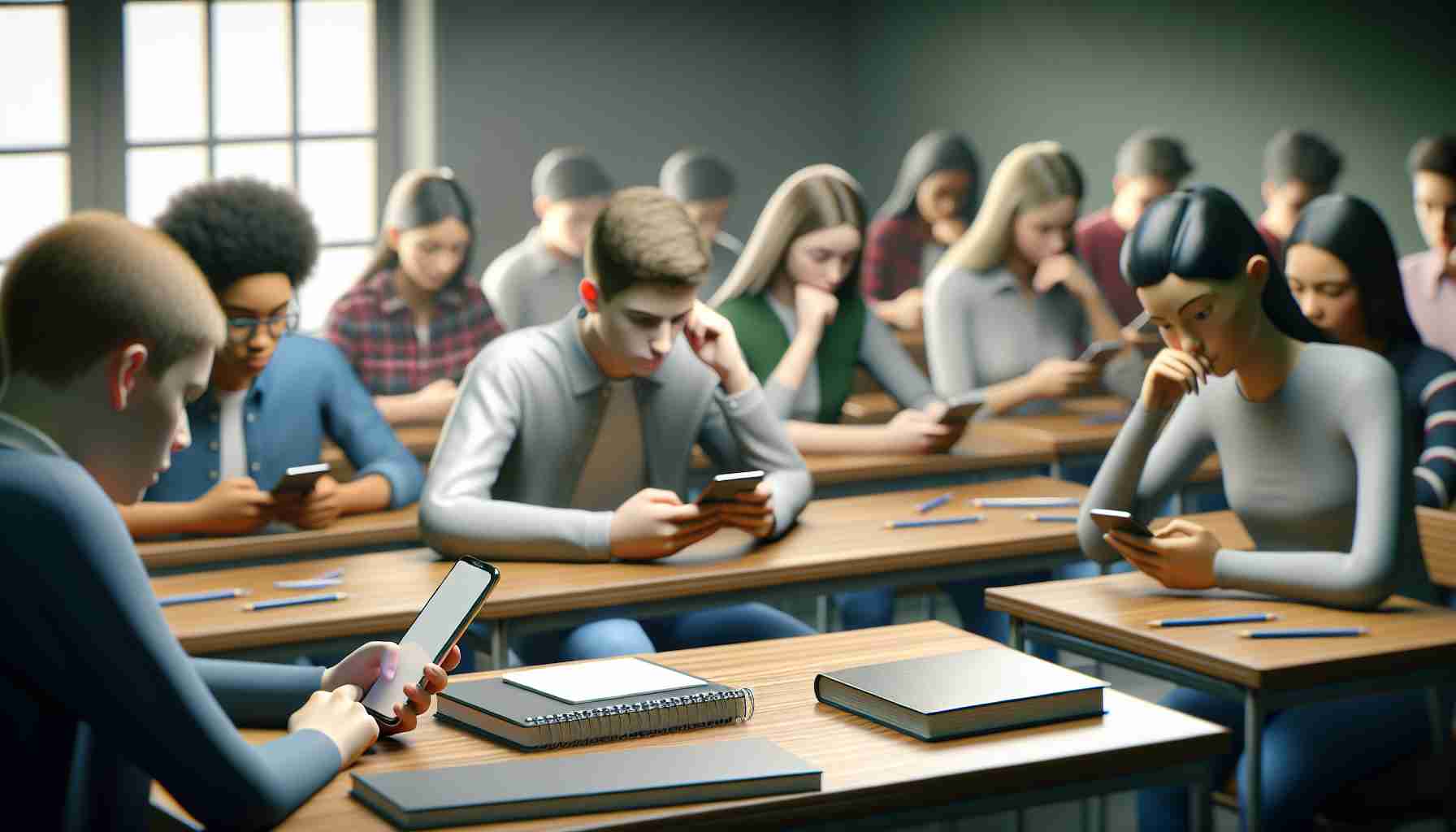The government of British Columbia recently implemented a ban on the use of smartphones in primary and secondary schools. If other provinces want to help students succeed, they should follow suit. There is increasing evidence that smartphones distract students from learning mathematics, and social media can have a detrimental impact on young people.
The latest report from the Programme for International Student Assessment (PISA), the most reliable international standardized test for 15-year-olds worldwide, revealed a “strong correlation” between smartphone-related distractions and students’ performance. According to PISA, 45 percent of students in 38 OECD countries experienced anxiety if their phones were not beside them, and 59 percent reported being distracted by other students’ devices during math lessons – in Canada, this percentage rises to 80 percent.
The result is that students who were distracted by smartphones during math lessons scored 15 points lower in the PISA math tests compared to students who reported no distractions. For reference, PISA considers a 20-point drop equivalent to one year of lost learning.
In British Columbia, students’ results have been declining for the past 20 years. Since 2003, when the latest available data became accessible, math scores in British Columbia have dropped by 42 points, and 15-year-olds in the province are now over two years behind the 2003 math level. During the same period, reading and science scores have also decreased.
One doesn’t have to be an expert in pedagogy to understand how distracting and potentially toxic smartphones can be in classrooms. But the PISA report provides clear data that smartphones cause anxiety in teenagers and lead to a loss of skills. This data is derived from comprehensive standardized tests and surveys conducted among students by PISA, once again highlighting the importance of high-quality tests.
However, the test data from the government of British Columbia is becoming less useful as the quality of provincial tests in high schools in the province has dramatically declined.
Research shows that after the British Columbia government changed the math and English content-based exams to vague assessments of reading and writing skills in 2017/18, the percentage of students taking these assessments significantly decreased, despite the government claiming that the assessments are required for graduation. At the same time, the pass rates increased.
Specifically, the participation rate of students in the reading skills assessment in Grade 10 in British Columbia in 2021/22 was 17.1 percentage points lower than the English exams in Grade 10 in 2015/16. During the same period, the participation rate in the math skills assessment decreased by 22.3 percentage points, and the participation rate in the reading skills assessment in Grade 12 decreased by 14.2 percentage points. Meanwhile, reading and math skills in Grade 10 also declined. Currently, less than half of Grade 10 students in British Columbia have sufficient math skills.
At the same time, the declining participation rate of students in tests reduces the quality of data that the government can use to identify issues with student performance. The assessments themselves are also of lower quality. The government replaced percentage-based grades with imprecise rating categories such as “emerging” and “proficient.”
It is often said that when unsure of the answer on a standardized test, one should choose C because it is most likely correct. (This is a myth, not advice!) But without a strong system of standardized tests, the British Columbia government is turning a blind eye and choosing C when formulating educational policies. In the coming years, there will be no clear evidence of whether the smartphone ban has contributed to improved learning outcomes in this province due to the low-quality test data, despite overwhelming evidence from other tests.
If the government of British Columbia wants to improve the quality of its data to make better-informed decisions about schools in the province, it should strengthen standardized testing for the benefit of current and future students.
FAQ Section:
Q: What are the dangers of smartphones in schools?
A: Smartphones can distract students from learning mathematics, and social media can have a detrimental impact on young people.
Q: What evidence confirms the impact of smartphones on students’ performance?
A: The Programme for International Student Assessment (PISA) report revealed a “strong correlation” between smartphone-related distractions and students’ performance. Students who are distracted by smartphones score lower in math tests.
Q: What are the specific results of students in British Columbia?
A: Students’ results in British Columbia have been declining for the past 20 years. Math, reading, and science scores have dropped below the levels achieved in 2003.
Q: What are the benefits of high-quality tests?
A: High-quality tests provide clear data and help identify issues in student performance, enabling better-informed decisions about education.
Definitions:
– PISA (Programme for International Student Assessment): A program conducted by the OECD that assesses the skills of 15-year-olds in mathematics, reading, and science worldwide.
Related Links:
– edu.gov.bc.ca – The website of the government of British Columbia’s education department.
– oecd.org/pisa – The official website of the Programme for International Student Assessment.
– oecd.org/education – OECD’s website dedicated to education-related topics.
[embedded content]
The source of the article is from the blog queerfeed.com.br
